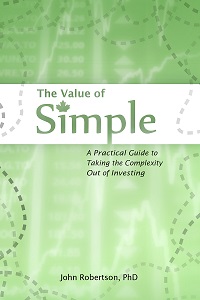Freelancers Guide Part 4: Sales Tax, HST Registration
February 4th, 2016 by PotatoThis is part 4 of a series, click here for part 1 and the table of contents.
HST can be a post series on its own and I don’t want to get too lost in the weeds on it, especially as I am myself a small supplier. But it can be very important so I want to touch on a few points, especially to reinforce the initial message that the onus is always on you to figure all this tax stuff out. When you hit the threshold for registering, it’s on you to go ahead and register, no one will tell you (until it’s way too late and then that notice comes with penalties).
Briefly, HST (GST) is sales tax that you charge your customers on goods and services; you then have to pass (remit) those taxes collected back to the government. HST can be a bit of a pain, especially because it’s a parallel system to income taxes — you file and pay separately, and it’s not handled by your tax software (e.g. TurboTax, UFile, SimpleTax, etc.).
Fortunately, most people conducting side businesses (or just starting up) don’t have to collect HST because there’s the small supplier exemption: if your sales are less than $30,000 per year, you don’t have to register or collect HST (note that this is the previous four calendar quarters, so if you have lumpy income you may cross the threshold even if your calendar year income works out to less than $30,000 in each year — also note that some industries have to register right away, like taxis). So if you’re a small supplier you don’t collect HST, you don’t file, you don’t have to pay it to the government — another barrier to getting started and trying something out that’s not in your way. But remember that as your business grows you may hit that point where you’ll have to register, and it will be up to you to notice and remember to do that.
Once you register and start collecting HST, you’ll find that the amount of HST you charge depends on where your customer is located: if you’re in Ontario and your customer is in Alberta, you charge them that (GST) rate; your customers in Ontario get the Ontario HST rate, etc. It’s not just one rate for everyone based on where you are. This can lead to a massive headache if you’re selling small-ish items at retail and your store software isn’t set up to handle the tax (for that reason, if I cease to be a small supplier I’ll likely shut down my book storefront, and let a retailer handle it). If your customer is in the US (or other international spots) then you won’t charge them HST at all — but note that those sales do count towards determining whether you’re a small supplier. If all of your business is to US/international clients, you can be in the strange situation where you cross the $30,000 small supplier threshold and have to register for HST… but then not actually charge HST to anyone because they’re all “zero-rated”.
So, as long as your business is a side thing or just starting up, you can more-or-less ignore HST, and just watch to see if you no longer count as a small supplier. Once you cross that threshold, you must register. That will give you a HST # to put on your invoices/receipts, and make it so that you have to file a separate HST return each year.
The HST return is a bit of an odd duck in that it’s not technically due to be filed until the end of June of each year, yet you must pay by the end of April. If you use the quick method, you’ll also need the amounts of your “benefit” for your income tax return in April. All that means you can ignore the posted deadline of June and realistically plan to have your stuff together by March/April.
The essence of HST filing is to report how much you made in sales, how much HST you collected on behalf of the government, and then subtract what you paid in HST on your own supplies in the course of running your business. If you’re primarily service-based (i.e. don’t have a tonne of input HST costs to claim) then you’ll likely want to look into filing with the quick method.
The quick method lets you estimate your input credits as a percentage of your HST, which is both faster for reporting, and may mean you get to pocket some of the HST if you have very low input costs (note though that this is a taxable benefit — the amount you get to keep from the quick method will get added to your income in your T2125 in your income taxes). The worst part of this whole thing is The Most Confusing Table in The World that lists where your business is (participating/not participating/Nova Scotia/PEI) against the same labels for where your “supplies made” — which is a really weird way of saying sales. Now Canada only has 10 provinces and 3 territories, so this table could completely explicitly list each one for perfect clarity, but instead chooses this insanely obsfucating language instead. So for reference, Ontario is a “other participating province” so Wayfare (and I, if I ever cross the small supplier threshold) will look to that last column and row, and remit 8.8% of supplies, less $300 (or, again to put it in a confusing way, 1% on the first $30,000 in supplies).
Participating provinces here mean those that have HST as a single sales tax instead of separate GST and provincial sales tax. Now what’s extra confusing for this table is that this CRA page tells me that there are only five participating provinces: New Brunswick, Nova Scotia, Newfoundland and Labrador, Ontario, and Prince Edward Island. Two of those are already treated separately in that confusing table; could the other three not get called out?
In another “you have to figure this out on your own” note, you have to pay your HST by quarterly installments if your net tax owing is $3,000 or more in a year — but they won’t tell you in advance that you’ve hit that point and that it’s time to start sending more money along more frequently.
Note that some HST non-participating provinces (BC, Sask, MB) may have provincial sales tax to worry about even if you’re a small supplier and don’t have HST headaches (e.g., in BC the equivalent to the small supplier threshold is $10,000 in revenue, so someone selling $20,000/yr may have to register for PST even if they don’t have to register for HST yet). As always, the onus is on you to figure this out for your province.
Finally, in a comment on part 2 Jen points out that you may want to consider registering for HST even if you’re a small supplier in order to make your business seem more legitimate in the eyes of your clients.



 Questrade: ETFs are free to trade, and if you sign up with my link you'll get $50 cash back (must fund your account with at least $250 within 90 days).
Questrade: ETFs are free to trade, and if you sign up with my link you'll get $50 cash back (must fund your account with at least $250 within 90 days).  Passiv is a tool that can connect to your Questrade account and make it easier to track and rebalance your portfolio, including sending you an email reminder when new cash arrives and is ready to be invested.
Passiv is a tool that can connect to your Questrade account and make it easier to track and rebalance your portfolio, including sending you an email reminder when new cash arrives and is ready to be invested.